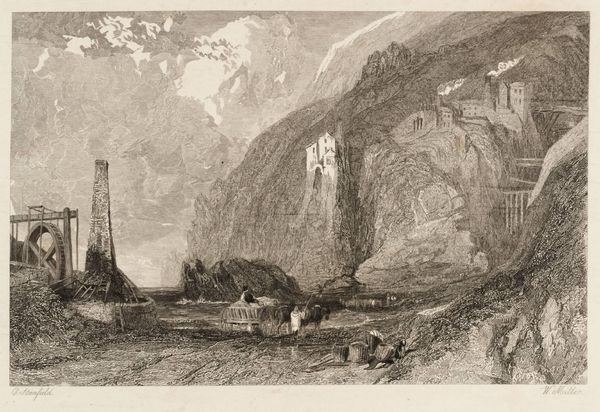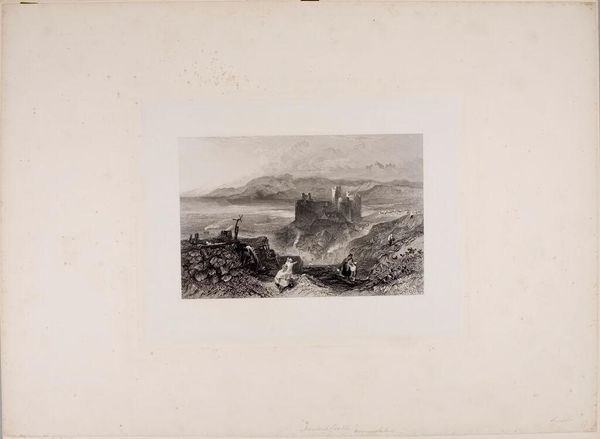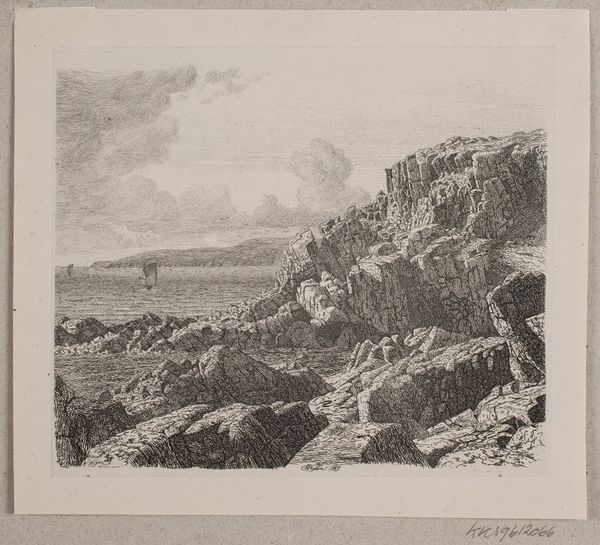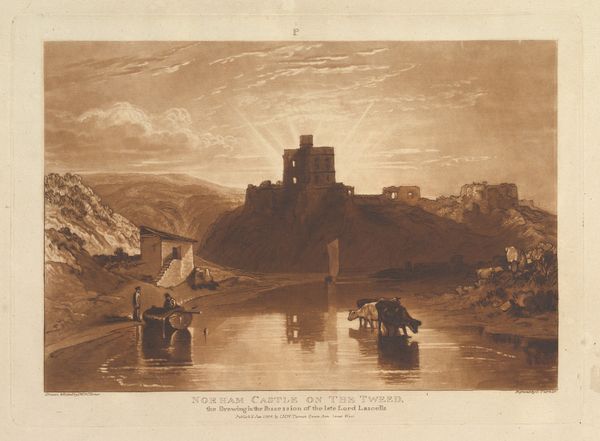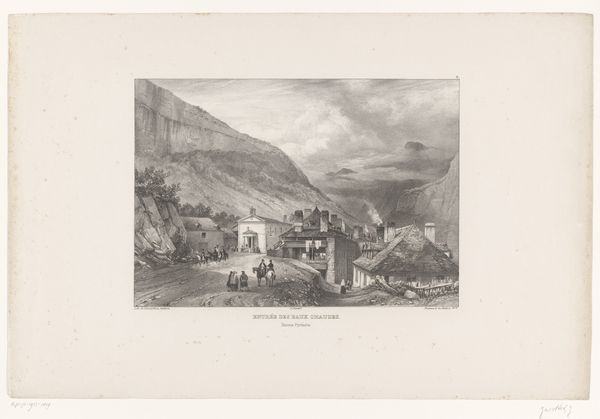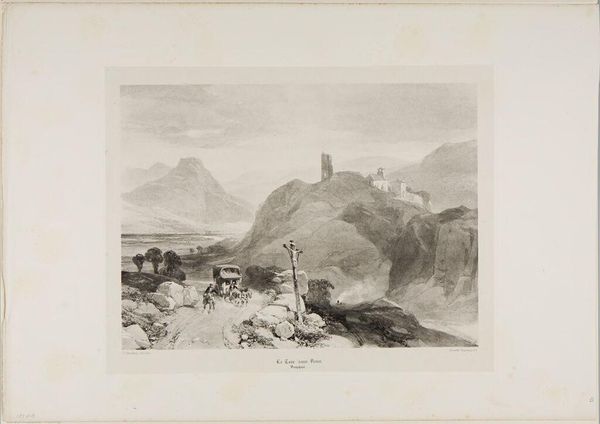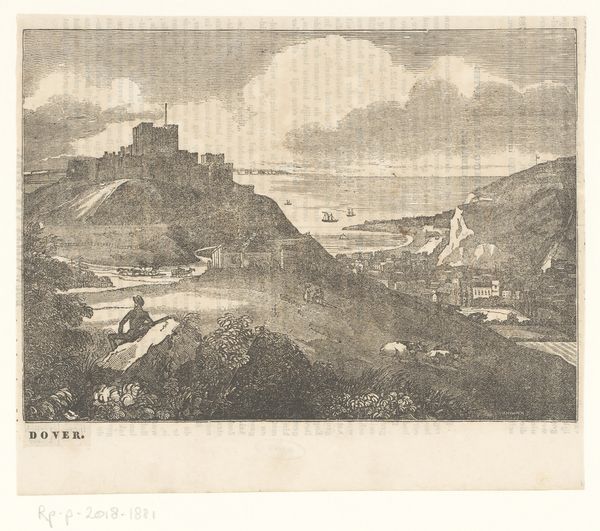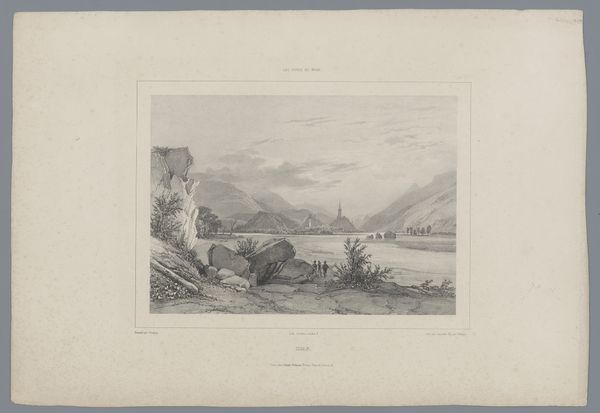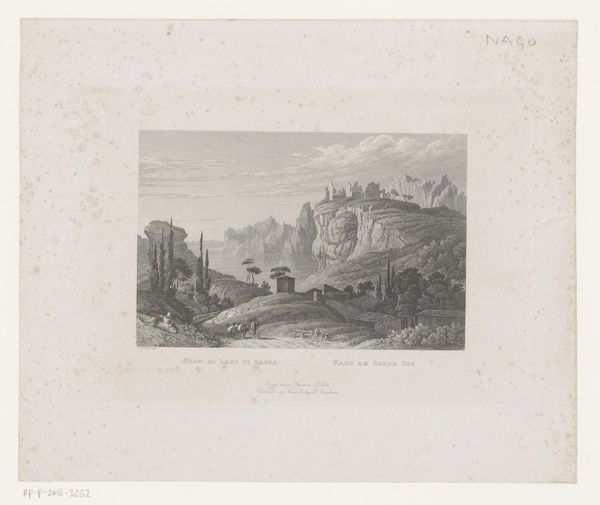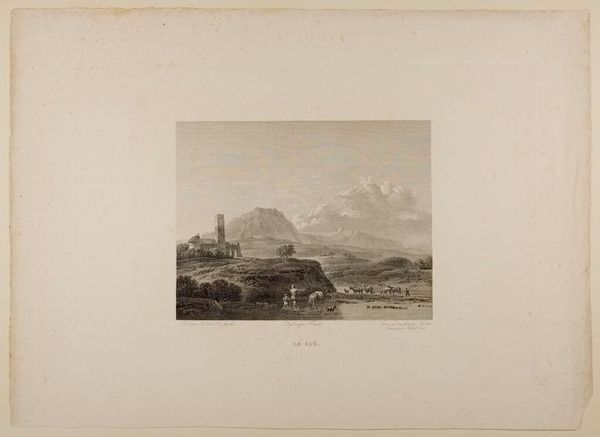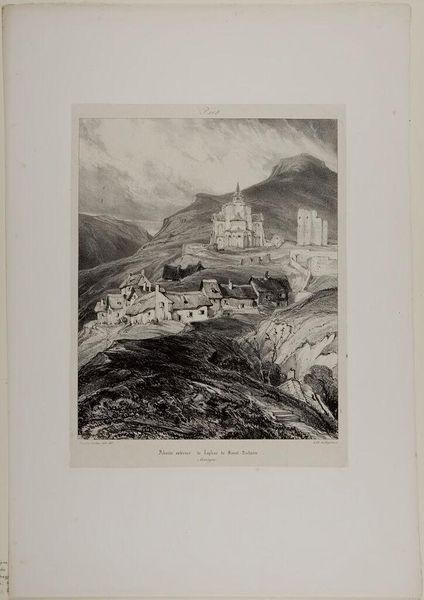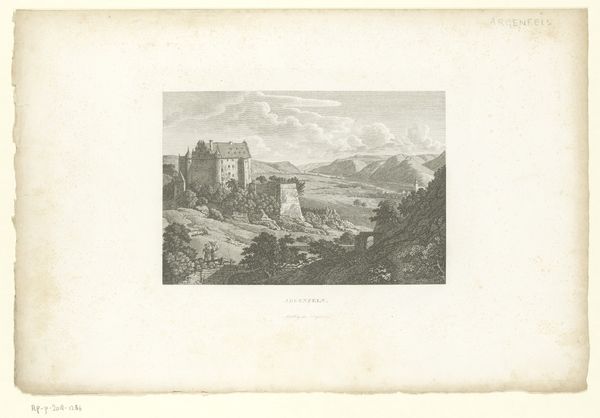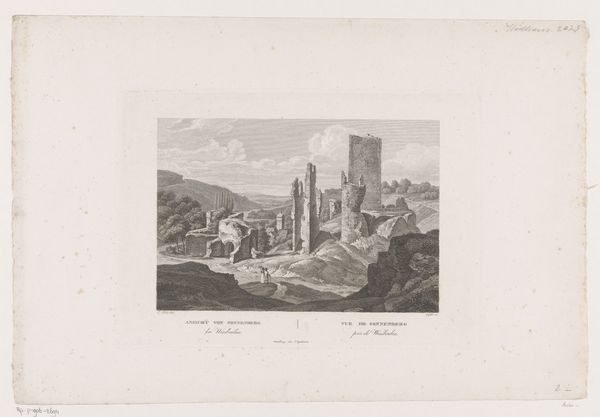
drawing, print, etching, paper
#
pencil drawn
#
drawing
# print
#
etching
#
landscape
#
paper
#
pencil drawing
Dimensions: 241 × 321 mm (image); 279 × 354 mm (plate); 351 × 456 mm (sheet)
Copyright: Public Domain
Curator: James Duffield Harding’s etching, “The Tour-sans-Venin, Dauphiné Region,” offers us a window into a specific locale, capturing both the natural beauty and man-made structures in this region. What strikes you first about this landscape? Editor: A kind of brooding serenity, if that’s possible. It's predominantly monochrome and I notice the imposing natural formations and a ruin dominating the top right. Something about the whole scene evokes the feeling of a pilgrimage, both physically and maybe spiritually, or something solemn in its narrative weight. Curator: The placement of that crucifix is far from accidental. It acts as a clear symbol, doesn't it? Perhaps one intended to remind us of morality or mortality amidst this journey. Roadside crosses were historically significant markers and protectors, after all. It’s placed with an interesting relationship to that distant ruin above. Editor: Interesting. Yes, those ruins atop the hill definitely give a feeling of lost grandeur and decayed power juxtaposed with this...hopeful figure down below. Also I love how the figures and carriage on the road lend the scene some action. It's almost like they’re venturing forward into some personal narrative. Like this piece could act as the set up for a gothic novel! Curator: Harding, as part of the Picturesque movement, was keenly aware of orchestrating these elements, that interplay between human activity and natural monumentality to inspire an aesthetic experience. This is heightened by his detailed study of light and shadow. Notice how the brighter path contrasts to the darker cliffs on either side, guiding our eye. The "picturesque" wasn't just about capturing what was there; it was about composing it to provoke specific emotional and intellectual responses. Editor: It’s almost cinematic. Makes me wonder about the artist’s emotional connection to the Dauphiné region, and landscape itself, what that geographical locale may have represented or symbolised to him at this stage of his journey as an artist. Did the act of rendering contribute to that ongoing, cyclical creative act? Curator: I suspect so. The Dauphiné and the Alps became recurring motifs, becoming powerful, expressive forms connected to both history, personal and collective memory, which Harding obviously used as inspiration to share. The way the scene unfolds certainly provides that effect for us now. Editor: That makes me think about the act of viewing landscape as being like a dream itself, some internal vision. I love this little etching for it. Curator: Indeed. Harding uses established visual languages to reveal personal, emotional, and potentially political resonance from observed external landscape.
Comments
No comments
Be the first to comment and join the conversation on the ultimate creative platform.
